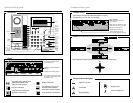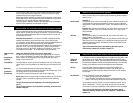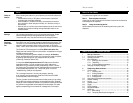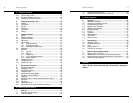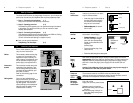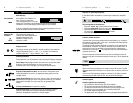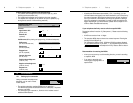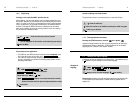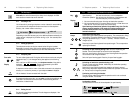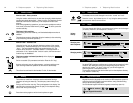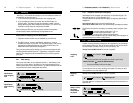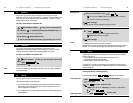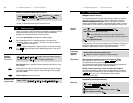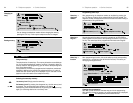
Foreword: Your new telephone: Possibilities for useForeword: Your new telephone: Possibilities for use
Important calls: A SmartLine D750 speciality
When you are waiting for an important call, the following situations always
seem to occur:
Situation 1:
It would have to be at this moment that you have to leave the house or the
firm because of an important appointment. What can you do? Cancel the
appointment? Or ask someone else to “guard” the telephone and then call
you?
Solution: With the SmartLine D750 you can divert calls for one (or even all)
telephone numbers of your line to another number. In this way you are
always available.
Situation 2:
Whilst you are waiting for an important call, lots of other calls come in, for
which you don’t really have time...
Solution: For this case (and for others, too) your SmartLine D750 has a call
filter. Using this, you can specify up to 3 telephone numbers, whose calls
should be accepted or barred. This applies to calls from an ISDN line tele-
phone number transfer.
You will find these functions in the following sections of part A:
Call diversion: chapter 4.5; call filter: chapter 5.9
Telephone No. display: Communication even before the handset is lifted
In the case of a call from another ISDN line, the telephone number of the caller
can be shown to you in the display. This means that even at the first ring a
caller hands over his ”calling” card at the SmartLine D750. If you have already
entered his/her telephone number in the telephone directory or in a name key
memory of you telephone, even the accompanying name is displayed.
If you can’t take a call (with transfer of the telephone number), the
SmartLine D750 stores the telephone number in the call list (max. 10
positions). You can then select the telephone number from this list when
you call back.
Your own telephone number can be transferred ...
1. ... When you call a party with an ISDN line.
2. ... If you are called: Your telephone number is also transferred to the
caller. In this way he can be sure that he has reached the right party.
You can also prevent the transfer of your own telephone number, the so-
called ”identification”. This way you remain anonymous from the start.
Continuous or temporary suppression of the telephone number is possible.
You will find these functions in the following sections of part A:
Telephone directory chapter 4.3; call list: chapter 4.1; identification:
chapter 2.9
Call diversion
Call filter
Telephone
directory
Name keys
Call list
Identification
In the following pages you will be shown a small selection of the possibili-
ties for using your new ISDN telephone. However, the SmartLine series
models offer a far wider range of features.
Please note that the availability of certain functions depends on the type of
ISDN telephone line and on additional services and features which must be
ordered from your national telephone network provider.
This user’s guide is based on the Euro ISDN standard which is compatible
with the DSS1 standard of most European countries.
SmartLine D750: Two comfortable connections to the telephone network
The Euro ISDN basic access (line) connects the telephone with the tele-
phone network. It offers two so-called ”B-channels”, via which two external
calls can be made simultaneously. With the SmartLine D750 you can use
this possibility to the full:
Does this sound familiar? ... You are in the middle of telephone call and
suddenly the telephone at the connection rings. You tell the first party
(i.e. the person you are talking to on the phone) what has happened and put
the handset to one side. You then dash to the other telephone.
Once you are there, you take the second call (hopefully you remembered to
press the “mute” key on the first telephone ...). Now you must decide
which call you wish to terminate, perhaps you will decide to ”jump” from
one telephone to the other... As we said: Does this sound familiar? ...
Using your SmartLine D750, this works far more easily:
An new incoming call during an existing call is signalled by the “camp-on
busy” tone in the handset. If the caller has an ISDN connection, your tele-
phone number can be displayed. You can decide whether you wish to
accept or reject the 2nd call.
You can accept the second call without ending the first one. The first party
cannot listen in to this consultation call. After that you can resume the first
call.
Or: You can speak alternately with both parties (brokering).
Perhaps you would even like to talk to both parties at the same time: To do
this, simply switch on the conference function.
You can also connect both parties with each other (transferring).
By the way: You do not have to wait for a second party to call. You can also
set up the calls for consultation, brokering, conference and transferring
yourself.
You will find these functions explained in the following sections of
part A:
Camp-on busy: chapter 2.10; consultation, brokering, conference and
transfer: chapter 3
Camp-on busy
tone
Accepting or
rejecting
Consultation
Brokering
Conference
Transferring




